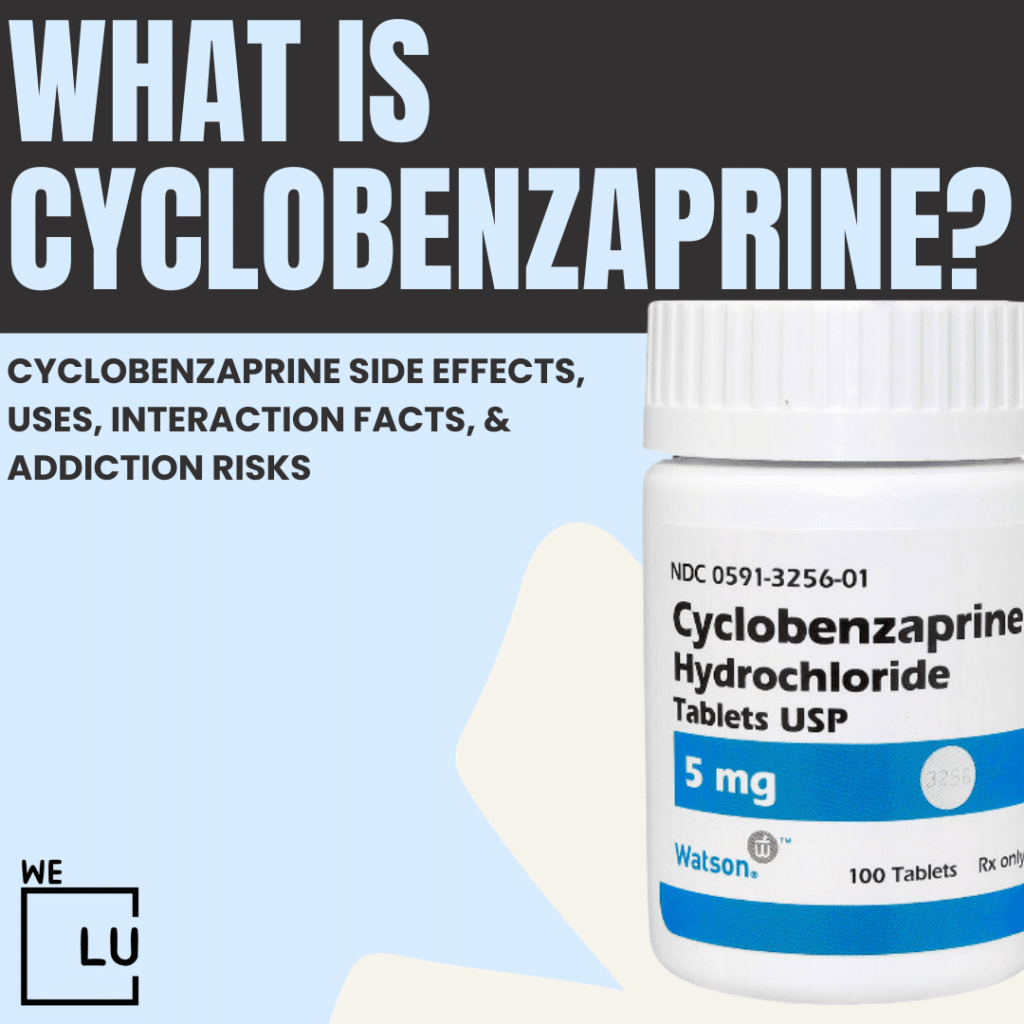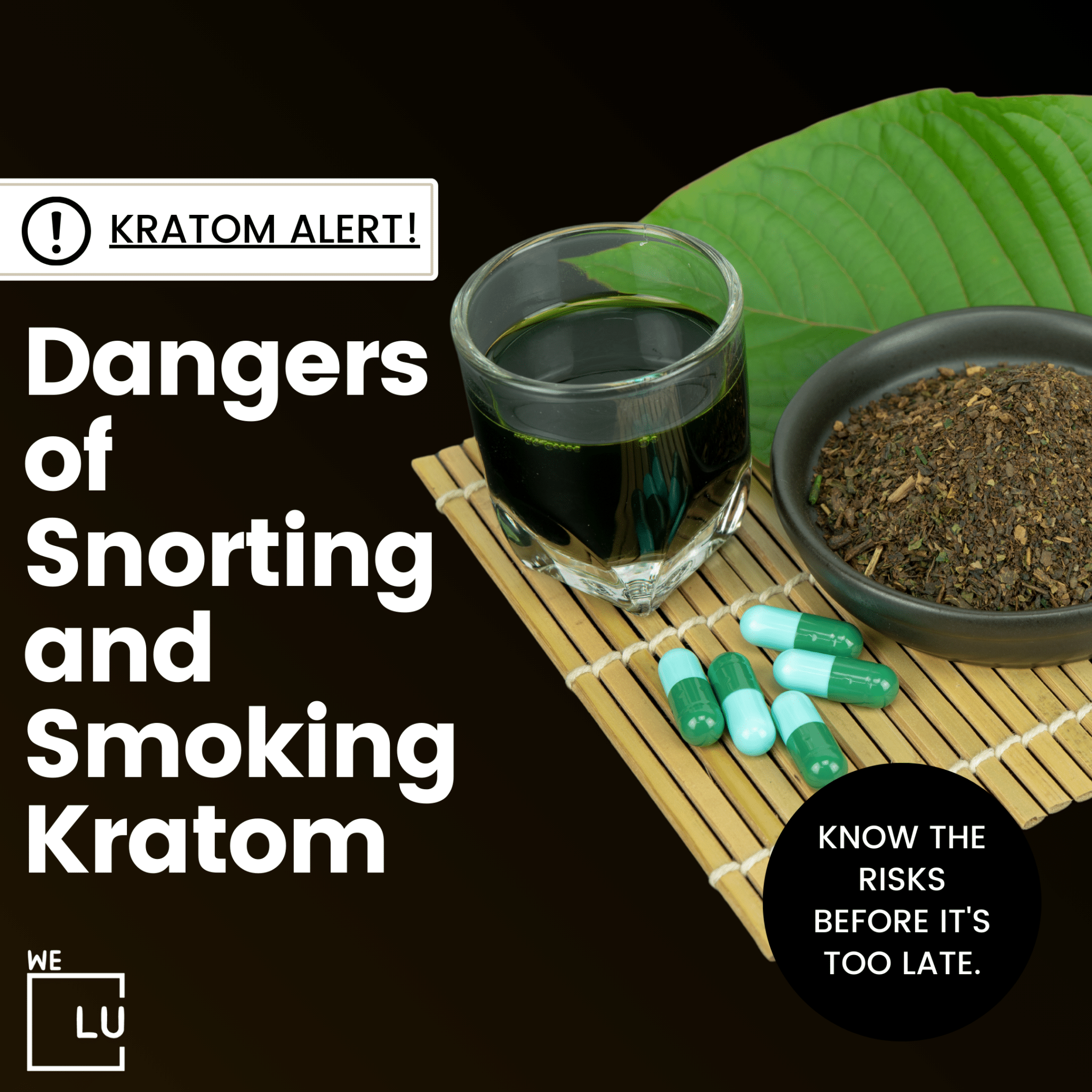What Is Cyclobenzaprine?
Cyclobenzaprine is a muscle relaxant medication used to treat muscle spasms and associated pain. It is often prescribed for short-term use in conjunction with rest and physical therapy to help relieve muscle discomfort caused by injuries or conditions such as muscle strains. Cyclobenzaprine works by affecting the central nervous system to reduce muscle spasms.
Cyclobenzaprine is not recommended for long-term use, and a healthcare professional should supervise its use. Common brand names for cyclobenzaprine include Flexeril and Amrix.
As with any medication, follow your doctor’s instructions and inform them about any other medications you are taking and any pre-existing medical conditions. If you have any concerns or questions about using cyclobenzaprine, it’s best to consult your healthcare provider.
Other Names For Cyclobenzaprine
Cyclobenzaprine is the generic name for the medication, but it is also sold under various brand names. Some common brand names for cyclobenzaprine include:
- Flexeril: One of the most widely known brand names for cyclobenzaprine.
- Amrix: This is an extended-release formulation of cyclobenzaprine, designed to be taken once daily.
- Fexmid: Another brand name for a formulation of cyclobenzaprine.
Cyclobenzaprine Side Effects
Cyclobenzaprine, like any medication, can cause side effects. It’s important to note that not everyone will experience these side effects, and some people may experience them to varying degrees. If you are prescribed cyclobenzaprine and are concerned about potential side effects, it’s crucial to discuss them with your healthcare provider.
Short-term Side Effects Of Cyclobenzaprine
Here are some common short-term side effects associated with cyclobenzaprine:
- Drowsiness or Fatigue: Cyclobenzaprine can cause drowsiness, impairing your ability to concentrate or perform specific tasks. Avoid driving or operating heavy machinery is often recommended until you know how the medication affects you.
- Dry Mouth: This is a common side effect of cyclobenzaprine. Staying hydrated and chewing sugar-free gum or sucking on ice chips may help alleviate this symptom.
- Dizziness or Lightheadedness: Some people may experience dizziness or lightheadedness, especially when standing up quickly. Moving slowly when getting up from a sitting or lying position is important.
- Blurred Vision: Cyclobenzaprine may cause temporary blurred vision in some individuals.
- Constipation: This is another possible side effect. Maintaining a healthy diet with an adequate intake of fiber and fluids can help prevent or alleviate constipation.
- Nausea or Upset Stomach: Some people may experience stomach discomfort or nausea.
- Headache: Headaches are a potential side effect of cyclobenzaprine.
Long-term Side Effects Of Cyclobenzaprine
Cyclobenzaprine is generally prescribed for short-term use, typically no longer than a few weeks. Prolonged use or misuse of cyclobenzaprine can lead to various concerns, including potential long-term side effects. Some possible long-term side effects or considerations include:
- Tolerance: With prolonged use, some individuals may develop tolerance to the effects of cyclobenzaprine, meaning that over time, the same dose may become less effective.
- Dependence and Withdrawal: While cyclobenzaprine is not considered highly addictive, abrupt discontinuation after long-term use may lead to withdrawal symptoms such as headaches, nausea, irritability, and muscle stiffness. Tapering the medication under the guidance of a healthcare provider can help minimize withdrawal symptoms.
- Anticholinergic Effects: Cyclobenzaprine has anticholinergic properties, which means it can interfere with the activity of the neurotransmitter acetylcholine. Long-term use may contribute to anticholinergic side effects such as dry mouth, constipation, blurred vision, and difficulty urinating.
- Cognitive Impairment: Some studies suggest that anticholinergic medications, including cyclobenzaprine, may be associated with cognitive impairment, particularly in older adults. Long-term use may contribute to memory problems or confusion.
- Increased Risk in Older Adults: Older adults may be more susceptible to the side effects of cyclobenzaprine, including anticholinergic effects and sedation. Caution is generally advised when prescribing muscle relaxants in this population.
- Interactions with Other Medications: Prolonged use of cyclobenzaprine may increase the risk of interactions with other medications. Inform your healthcare provider about all your medicines to avoid potential adverse effects.

Skip To:
Learn More:
How Long Do The Effects Of Cyclobenzaprine Last?
The duration of the effects of cyclobenzaprine can vary depending on factors such as the individual’s metabolism, the specific formulation of the medication, and the dosage prescribed. Generally, the immediate-release form of cyclobenzaprine is taken multiple times a day, and its effects are expected to last around 4 to 6 hours per dose.
The extended-release formulation of cyclobenzaprine, known by the brand name Amrix, is designed to provide a prolonged release of the medication over an extended period. Amrix is typically taken once daily, and its effects may last throughout the day and into the night.
While cyclobenzaprine can help alleviate muscle spasms and associated pain, it is generally prescribed for short-term use. Most healthcare providers recommend using cyclobenzaprine for no more than a few weeks due to the risk of tolerance, dependence, and potential side effects.
If you have specific questions about the duration of the effects of cyclobenzaprine or if you are experiencing persistent symptoms, consult your healthcare provider. They can guide the appropriate duration of treatment and may explore other options if needed. Additionally, follow your healthcare provider’s instructions regarding dosage and any adjustments to the treatment plan.
| Aspect | Immediate-Release Cyclobenzaprine | Extended-Release Cyclobenzaprine (Amrix) |
|---|---|---|
| Onset of Action | 1 to 2 hours | 1 to 2 hours |
| Peak Effects | 4 to 6 hours | 8 to 10 hours |
| Duration of Effects | Approximately 4 to 6 hours | Intended for a prolonged release over 24 hours |

Get Your Life Back
Find Hope & Recovery. Get Safe Comfortable Detox, Addiction Rehab & Dual Diagnosis High-Quality Care.
Hotline (855) 695-1160
How Does Cyclobenzaprine Work?
Cyclobenzaprine works as a centrally-acting muscle relaxant. Its exact mechanism of action is not fully understood. Still, it is believed to involve a combination of effects on the central nervous system, particularly within the brain and spinal cord.
Here are some key aspects of how cyclobenzaprine works:
- Central Nervous System Depression: Cyclobenzaprine has a depressant effect on the central nervous system. It inhibits the activity of neurons in the brain and spinal cord, reducing muscle spasms.
- Increased Norepinephrine Levels: Cyclobenzaprine is thought to increase the levels of norepinephrine, a neurotransmitter, in the central nervous system. This increase in norepinephrine may contribute to the muscle relaxant effects.
- Sedative Effects: Cyclobenzaprine has sedative properties, and it can cause drowsiness. This sedation can help alleviate muscle-related discomfort by promoting relaxation.
Cyclobenzaprine is generally recommended for short-term use (usually a few weeks), rest, and physical therapy. Prolonged use is typically avoided due to the risk of tolerance and potential side effects.
Cyclobenzaprine is often prescribed for muscle strains and sprains, where muscle spasms contribute to pain and discomfort. As with any medication, follow your healthcare provider’s prescribed dosage and instructions and inform them of any other medications you take to avoid potential interactions. If you have questions about how cyclobenzaprine works or concerns about its use, discuss them with your healthcare provider for personalized guidance.
Get Help. Get Better. Get Your Life Back.
Searching for an Accredited Drug and Alcohol Rehab Centers in Near You?
Even if you have failed previously and relapsed, or are in the middle of a difficult crisis, we stand ready to support you. Our trusted behavioral health specialists will not give up on you. When you feel ready or just want someone to speak to about therapy alternatives to change your life call us. Even if we cannot assist you, we will lead you to wherever you can get support. There is no obligation. Call our hotline today.
FREE Addiction Hotline – Call 24/7How Is Cyclobenzaprine Used?
Cyclobenzaprine is typically used as a short-term treatment for muscle spasms and associated pain. It is often prescribed with rest and physical therapy to help relieve discomfort caused by muscle strains and sprains. Here are the general guidelines for the use of cyclobenzaprine:
- Dosage: The cyclobenzaprine dosage can vary depending on the specific formulation and the severity of the treated condition. The immediate-release form is often taken multiple times daily, while the extended-release form (Amrix) is typically taken once daily. Your healthcare provider will determine the appropriate dosage for your specific situation.
- Duration of Use: Cyclobenzaprine is generally prescribed for short-term use, typically no longer than a few weeks. Prolonged use is usually avoided due to the potential for tolerance and the risk of side effects.
- Administration: Cyclobenzaprine is usually taken orally, with or without food.
- Avoiding Alcohol and Certain Substances: It’s advisable to avoid alcohol and certain other substances that can enhance the sedative effects of cyclobenzaprine. Combining cyclobenzaprine with alcohol or other central nervous system depressants can increase the risk of drowsiness and impairment.
- Monitoring for Side Effects: While taking cyclobenzaprine, it’s essential to be aware of potential side effects such as drowsiness, dizziness, dry mouth, and blurred vision. If you experience severe or persistent side effects, contact your healthcare provider.
- Consultation with Healthcare Provider: Before starting or discontinuing cyclobenzaprine, consult with your healthcare provider. They can guide the appropriate use, potential interactions with other medications, and any adjustments to the treatment plan.
Cyclobenzaprine is not a substitute for rest or physical therapy but is typically used in a comprehensive approach to managing muscle spasms. Always follow your healthcare provider’s instructions and inform them about any other medications or medical conditions you may have to ensure safe and effective use.

Comfortable Facilities & Amenities
High-Quality Addiction & Mental Health Rehabilitation Treatment
Rehab Centers TourRenowned California Addiction Center. Serene Private Facilities. Inpatient rehab programs vary.
Addiction Helpline (855) 695-1160Proven recovery success experience, backed by a Team w/ History of:
15+
Years of Unified Experience
100s
5-Star Reviews Across Our Centers
10K
Recovery Success Stories Across Our Network
- Low Patient to Therapist Ratio
- Onsite Medical Detox Center
- Comprehensive Dual-Diagnosis Treatment
- Complimentary Family & Alumni Programs
- Coaching, Recovery & Personal Development Events

Cyclobenzaprine Drug Interactions
Cyclobenzaprine can interact with other medications, potentially leading to adverse effects or reduced effectiveness. Inform your healthcare provider about all the medicines, supplements, and over-the-counter drugs you are taking to minimize the risk of interactions. Here are some common drug interactions associated with cyclobenzaprine:
- Monoamine Oxidase Inhibitors (MAOIs): Concurrent use of cyclobenzaprine with MAOIs, a class of antidepressants, can lead to severe and potentially life-threatening reactions. MAOIs include medications like phenelzine and tranylcypromine.
- Serotonergic Drugs: Combining cyclobenzaprine with other serotonergic drugs, such as selective serotonin reuptake inhibitors (SSRIs), serotonin-norepinephrine reuptake inhibitors (SNRIs), and certain tricyclic antidepressants, can increase the risk of serotonin syndrome. Serotonin syndrome is a potentially life-threatening condition characterized by symptoms such as confusion, hallucinations, seizures, extreme changes in blood pressure, increased heart rate, fever, excessive sweating, shivering, blurred vision, muscle spasm or stiffness, tremor, incoordination, stomach cramps, nausea, vomiting, and diarrhea.
- Central Nervous System (CNS) Depressants: Combining cyclobenzaprine with other CNS depressants, including alcohol, benzodiazepines, opioids, and certain antihistamines, can enhance sedation and increase the risk of side effects such as drowsiness and impaired coordination.
- Anticholinergic Drugs: Concurrent use of cyclobenzaprine with other medications possessing anticholinergic properties may increase the risk of anticholinergic side effects. Examples of anticholinergic drugs include certain antipsychotics, antihistamines, and tricyclic antidepressants.
- CYP3A4 Inhibitors: Medications that inhibit the CYP3A4 enzyme may increase the concentration of cyclobenzaprine in the body, potentially leading to an increased risk of side effects. Examples include some antifungal medications, certain antibiotics, and specific protease inhibitors used in the treatment of HIV.
Always consult with your healthcare provider before starting or stopping any medication while taking cyclobenzaprine. They can assess the potential for interactions and adjust your treatment plan accordingly. If you experience any unusual symptoms or side effects, seek medical attention promptly.
World-class, Accredited, 5-Star Reviewed, Effective Addiction & Mental Health Programs. Complete Behavioral Health Inpatient Rehab, Detox plus Co-occuring Disorders Therapy.
CALL (855) 695-1160End the Addiction Pain. End the Emotional Rollercoaster. Get Your Life Back. Start Drug, Alcohol & Dual Diagnosis Mental Health Treatment Now. Get Free No-obligation Guidance by Substance Abuse Specialists Who Understand Addiction & Mental Health Recovery & Know How to Help.
Cyclobenzaprine Addiction
Cyclobenzaprine itself is not considered highly addictive, and it does not produce the same level of dependence or abuse potential as some other medications. It belongs to the class of drugs known as muscle relaxants, and its primary use is for the short-term relief of muscle spasms and associated pain.
However, like many medications that affect the central nervous system, there is a potential for abuse or misuse, especially when taken in higher doses than prescribed. Some individuals may misuse cyclobenzaprine for its soothing effects, seeking to enhance feelings of relaxation or drowsiness. This misuse can lead to physical and psychological dependence.
Use cyclobenzaprine only as prescribed by a healthcare professional and follow their recommended dosage and duration of use. If you have concerns about the potential for dependence or addiction, it’s crucial to discuss them with your healthcare provider.
If you or someone you know is struggling with substance abuse or dependence, including misuse of medications like cyclobenzaprine, seek help. Healthcare providers, addiction specialists, and mental health professionals can provide support, guidance, and appropriate interventions.
Always inform your healthcare provider about any history of substance abuse or addiction before starting a new medication. They can consider this information when developing a treatment plan and may suggest alternative approaches or closely monitor your use of drugs.
Cyclobenzaprine Withdrawal
Cyclobenzaprine withdrawal is a set of symptoms that can occur when someone who has been taking the medication for an extended period stops using it suddenly. It’s important to note that cyclobenzaprine is not considered highly addictive, but abrupt discontinuation after prolonged use can lead to withdrawal symptoms. Here are some potential withdrawal symptoms associated with cyclobenzaprine:
- Rebound Muscle Spasms: The original symptoms of muscle spasms that the medication was prescribed for may return or intensify.
- Insomnia: Difficulty sleeping or changes in sleep patterns.
- Irritability: Feelings of frustration or agitation.
- Anxiety: Increased feelings of worry or nervousness.
- Headache: Pain or discomfort in the head.
- Nausea: A sensation of unease and discomfort in the stomach with an inclination to vomit.
- Flu-Like Symptoms: This may include muscle aches, chills, and sweating.
Make sure to manage the discontinuation of cyclobenzaprine under the guidance of a healthcare professional to minimize the risk of withdrawal symptoms. Your healthcare provider may recommend tapering the dosage gradually rather than stopping abruptly. Tapering helps to reduce the intensity of withdrawal symptoms and allows the body to adjust more gradually to the absence of the medication.
If you are considering discontinuing cyclobenzaprine or have concerns about potential withdrawal, it’s crucial to discuss this with your healthcare provider. They can provide personalized advice based on your specific situation, adjust your treatment plan as needed, and offer support. Never stop taking a prescribed medication without consulting your healthcare provider, as sudden discontinuation can lead to withdrawal symptoms and may not be in your best interest.
Experience Transformative Recovery at the We Level Up California Treatment Center.
See our authentic success stories. Get inspired. Get the help you deserve.



Start a New Life
Begin with a free call to an addiction & behavioral health treatment advisor. Learn more about our dual-diagnosis programs. The We Level Up treatment center network delivers recovery programs that vary by each treatment facility. Call to learn more.
- Personalized Care
- Caring Accountable Staff
- World-class Amenities
- Licensed & Accredited
- Renowned w/ 100s 5-Star Reviews
We’ll Call You
Muscle Relaxers Cyclobenzaprine, Soma, Baclofen, their Side Effects, Warnings, Types & Risks
Search We Level Up CA Cyclobenzaprine Side Effects, Drug & Alcohol Rehab / Detox & Mental Health Topics & Resources
Sources
- Khan I, Kahwaji CI. Cyclobenzaprine. [Updated 2023 Aug 28]. In: StatPearls [Internet]. Treasure Island (FL): StatPearls Publishing; 2023 Jan-. Available from: https://www.ncbi.nlm.nih.gov/books/NBK513362/
- Medline Plus – Cyclobenzaprine – https://medlineplus.gov/druginfo/meds/a682514.html
- FDA Access Data – Flexeril (Cyclobenzaprine) – https://www.accessdata.fda.gov/drugsatfda_docs/label/2003/017821s045lbl.pdf
- DEA – Cyclobenzaprine – https://www.deadiversion.usdoj.gov/drug_chem_info/cyclobenzaprine.pdf
- Label: Cyclobenzaprine — cyclobenzaprine hydrochloride tablet, film coated. (2019). https://dailymed.nlm.nih.gov/dailymed/drugInfo.cfm?setid=b12fb4ea-182e-462b-b6ed-cfd2f6bb71e8 Read more: Cyclobenzaprine Side Effects, Side Effects From Cyclobenzaprine, Flexeril Side Effects, Side Effects Of Cyclobenzaprine, Side Effects Of Flexeril, Side Effects Cyclobenzaprine, Flexeril Muscle Relaxant Side Effects, Side Effects Flexeril Muscle Relaxer, Side Effects For Flexeril, Cyclobenzaprine Side Effect, How Long Do The Side Effects Of Flexeril Last, Side Effects Flexeril,
- Elder NC. Abuse of skeletal muscle relaxants. Am Fam Physician. 1991 Oct;44(4):1223-6. PMID: 1927837.
- LiverTox: Clinical and Research Information on Drug-Induced Liver Injury [Internet]. Bethesda (MD): National Institute of Diabetes and Digestive and Kidney Diseases; 2012-. Muscle Relaxants. [Updated 2017 Jan 30]. Available from: https://www.ncbi.nlm.nih.gov/books/NBK548375/
- Witenko, C., et al. (2014). Considerations for the appropriate use of skeletal muscle relaxants for the management of acute low back pain. https://www.ncbi.nlm.nih.gov/pmc/articles/PMC4103716/
- Borenstein DG, Korn S. Efficacy of a low-dose regimen of cyclobenzaprine hydrochloride in acute skeletal muscle spasm: results of two placebo-controlled trials. Clin Ther. 2003 Apr;25(4):1056-73. doi: 10.1016/s0149-2918(03)80067-x. PMID: 12809957.
- Long-term Use of Cyclobenzaprine for Pain: A Review of the Clinical Effectiveness [Internet]. Ottawa (ON): Canadian Agency for Drugs and Technologies in Health; 2015 Feb 23. PMID: 25763449. Read more: Cyclobenzaprine Side Effects, Side Effects From Cyclobenzaprine, Flexeril Side Effects, Side Effects Of Cyclobenzaprine, Side Effects Of Flexeril, Side Effects Cyclobenzaprine, Flexeril Muscle Relaxant Side Effects, Side Effects Flexeril Muscle Relaxer, Side Effects For Flexeril, Cyclobenzaprine Side Effect, How Long Do The Side Effects Of Flexeril Last, Side Effects Flexeril,




